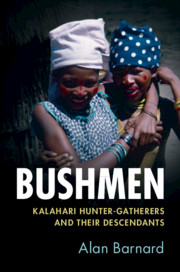Book contents
- Bushmen
- Bushmen
- Copyright page
- Contents
- Figures
- Tables
- Preface
- Pronunciation and Orthography
- 1 Bushmen
- 2 The Politics of Indigeneity
- 3 How Far Back Can We Go?
- 4 Discovery and Destruction of the /Xam
- 5 The !Xoõ and Their Neighbours
- 6 G/wi, G//ana and the Central Kalahari
- 7 Naro
- 8 Ju/’hoansi or !Kung
- 9 Hai//om
- 10 Bushmen of the Okavango
- 11 Sharing the Land with Others
- 12 Conclusions
- References
- Index
- References
References
Published online by Cambridge University Press: 11 July 2019
- Bushmen
- Bushmen
- Copyright page
- Contents
- Figures
- Tables
- Preface
- Pronunciation and Orthography
- 1 Bushmen
- 2 The Politics of Indigeneity
- 3 How Far Back Can We Go?
- 4 Discovery and Destruction of the /Xam
- 5 The !Xoõ and Their Neighbours
- 6 G/wi, G//ana and the Central Kalahari
- 7 Naro
- 8 Ju/’hoansi or !Kung
- 9 Hai//om
- 10 Bushmen of the Okavango
- 11 Sharing the Land with Others
- 12 Conclusions
- References
- Index
- References
Information
- Type
- Chapter
- Information
- BushmenKalahari Hunter-Gatherers and Their Descendants, pp. 177 - 200Publisher: Cambridge University PressPrint publication year: 2019
